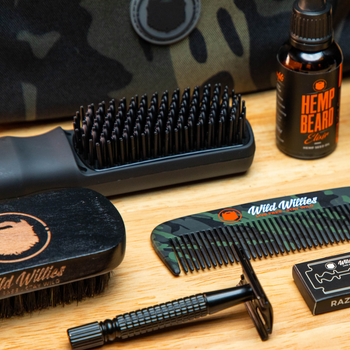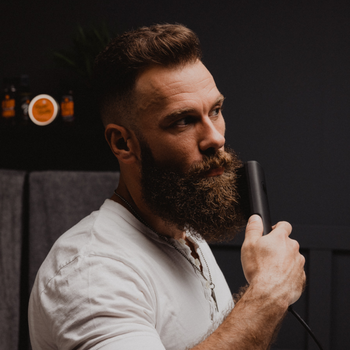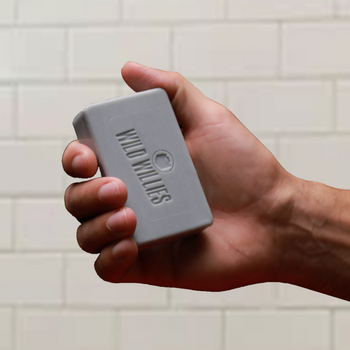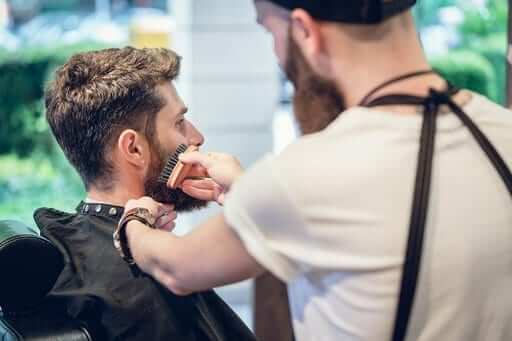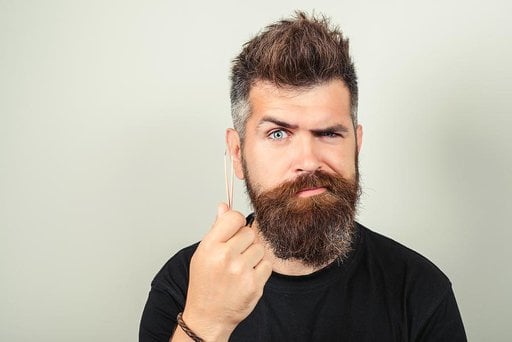Remember long days on the beach and sunny afternoons out in the yard?
Well summertime is right around the corner, which means you're probably going to be spending a lot more time outside and in the sun.
Vitamin D is great for our bodies, but the sun's rays beating down on you all day has downsides too.
But we don’t expect you to stay inside when the weather’s perfect and there isn’t a cloud in the sky.
All the downsides of hanging out in the sun can be avoided if you know the right stuff…
Do you know how to protect your skin from the sun? Or how to heal your damaged skin after it's already been overexposed?
Check out these tips for protecting your skin and even your beard during the summer months…
Why the Sun Is Bad for Your Skin
The sun has three different types of UV rays (UVA, UVB, and UVC) that are both good and harmful.
UVA rays are the most common form of exposure, although UVB rays do reach the skin. The ozone layer blocks UVC rays.
Everybody's skin has melanin and vitamin D, which causes the skin to darken as it defends itself against the sun's rays.
Too much UV exposure leads to sunburn that causes redness, feeling hot or getting chills, and pain.
Most people experience at least one sunburn in their lives, but long-term exposure can create other issues, ranging from mild dryness and irritation to skin cancer.
In addition to creating freckles and moles that could become cancerous, overexposure to UV rays can cause your face and body to show signs of aging earlier than that of your peers.

Fine lines and wrinkles begin to form, and eventually, you'll notice dark spots, tight-feeling skin, or areas that look leathery.
Too much sun can also lower your immune system's ability to keep your body healthy and may even lead to eye injuries. For this reason, protecting yourself from the sun is essential.
How To Protect Your Skin From Sun Damage
The most important thing you can do to protect yourself from the sun is to use sunscreen, even in the winter or if it's cloudy.
Just because you don't see the sun, doesn't mean its harmful UV rays aren't still penetrating your skin.
You should apply about a shot's glass worth of sunscreen (1 ounce) to any area that will be exposed to the sun. Do it at least 15 minutes before you go outside.
If you're spending the day outside, reapply your sunscreen every two hours. And if you're sweating or swimming, reapply every hour.
The type of sunscreen you choose matters too. It must have an SPF of at least 30 and should protect against both UVA and UVB exposure. This can prevent sunburn as well as protect you from skin cancer.
You should protect your skin in other ways as well.
Use lip balm and moisturizer with SPF for extra protection. When you can, wear long sleeves and pants, keeping in mind that dark clothes and tight-woven fabrics block the sun more easily.
Some clothes are even made with materials that help to protect you from the sun. Use hats and sunglasses with UV lenses to further protect yourself.
Keep in mind that some medications will make you more susceptible to sun damage, and the sun is the strongest between 10 a.m. and 4 p.m., so try to stay indoors during that time.
How To Heal Damaged Skin
Over time, a sunburn heals itself. But it also typically leaves behind dry skin.
To avoid related rough patches, you'll need to exfoliate skin with a loofah and use products like Wild Willies Tough Scrub, a charcoal-activated daily exfoliator.
If you have a beard, you'll also need to be careful of your grooming techniques if you want to reverse dry skin related to sun damage.

Avoid multi-blade razors if you easily experience razor burn or ingrown hairs, and avoid making your skin taut while shaving.
Use moisturizing shaving creams, shave only in the direction of your hair growth, and be sure to rinse the razor after each swipe.
But damage control can get a bit more complicated if you have wrinkles or other problems.
If you hope to reduce the appearance of fine lines and wrinkles, look for products with retinoids or beta-carotene in them.
Don’t hesitate to ask your doctor about recommendations for chemical peels, microdermabrasion, or laser therapy.
If over-the-counter products don't work, see a dermatologist to ensure there isn't a more serious, underlying issue.
The Best Skincare Routine for Your Face
The best skincare routine for your face is one that happens twice a day.
Throughout the day and overnight, your face attracts oils and minute pieces of dust and debris that can clog pores and cause breakouts, so you need to know how to protect skin from pollution.
Always start and end your day by washing your face. If you have sensitive or dry skin, be sure to use a product meant for it.
Always cleanse before using moisturizer or exfoliation products to ensure they work correctly. Moisturize each time you wash your face, but save exfoliation for once or twice a week.
If you scrub too often, you'll cause too much abrasion and make your skin look and feel even worse.
If you have a beard, you'll need to know how to protect your skin underneath as well.
Beard oils and beard balms not only help your beard to grow in a healthy way, but also help to protect the skin beneath the hair. Our beard growth kits are an excellent way to take care of your beard and your face all at once.
Defend Your Skin Like A Man
Skin protection tips, including moisturization and exfoliation, aren't just for women. Check out Wild Willie's to learn how to heal damaged skin with masculine products that keep you safe and smooth all summer long.

